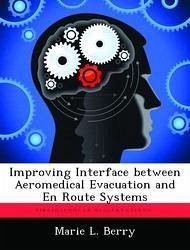Both the aeromedical evacuation and airlift en route systems have a long and glorious history. Working separately, they provide vital services to our military. Working in tandem, they represent a precious resource in our national security framework, for they reconstitute US combat capability by evacuating and redeploying combat and combat support personnel. Yet as the US begins its military transformation and fights rapid, short-duration, high-intensity conflicts, the tandem partnership between aeromedical evacuation and the en route system must evolve to handle faster-paced requirements for moving patients both intra- and inter-theater. Examining the organizational structures, missions and governing doctrines of both systems, one finds that there is little interface between the two, and operational success is predicated largely on innovation rather than design. In future operations, innovation may not be enough to guarantee success. As a result, this author recommends an interface framework to better educate the two sides of each other's respective missions, to train together to more fully understand the synergies between the two functions, and to set the stage for better communication in the crunch to ultimately save lives.








